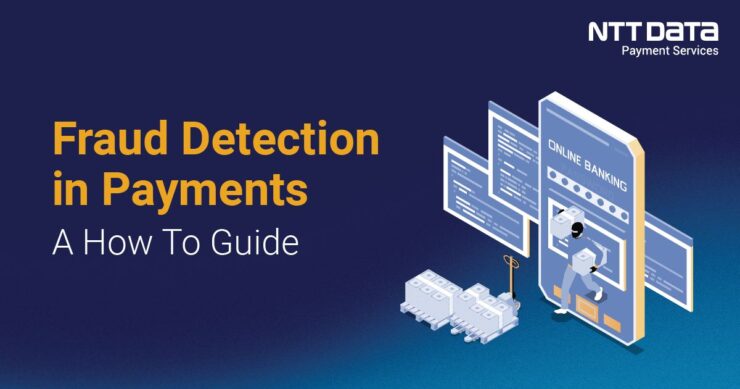
Table of Contents
- 1 Understanding Fraudulent Activities in Payments
- 2 Recent Web Stories
- 3 What is Fraud Detection in Payments?
- 4 Types of Payment Fraud
- 5 Emerging Technologies for Fraud Detection
- 6 Implementing a Fraud Detection Strategy
- 7 Secure your Online Payments with NTT DATA Payment Services
- 8 Securing Digital Payments With Fraud Detection
- 9 FAQs
Fraud is a growing concern in the digital payments system. However, businesses can proactively detect and prevent fraudulent transactions through advanced analytics, machine learning, and security measures.
In this blog post, we will discuss some of the latest methods and technologies to help detect and prevent fraud in payment systems. We will also provide a step-by-step guide to setting up an effective fraud detection solution for your business.
Understanding Fraudulent Activities in Payments
As digital payment systems continue to grow in popularity and usage, the risk of payment fraud increases exponentially. Criminals are finding newer, smarter ways to exploit vulnerabilities and steal people’s money.
As a business that accepts online payments, it is crucial to implement robust fraud detection mechanisms to protect your customers and your bottom line.
Recent Web Stories
What is Fraud Detection in Payments?
Fraud detection in payments refers to the process of identifying fraudulent transactions in real time to prevent financial loss. Advanced algorithms continuously monitor hundreds of transaction attributes like location, device details, spending patterns, and velocity to detect anomalies.
Machine learning models are trained on past fraudulent and legitimate data to recognise complex fraud patterns and flag suspicious activity for further review. This helps stop fraudsters before they can steal money or identities.
Types of Payment Fraud
There are several common types of payment fraud:
-
Account Takeover (ATO)
ATO, often referred to as “hacked accounts,” is a type of financial fraud in which cyber criminals obtain access to a victim’s account, usually a digital wallet, online banking, or e-commerce account.
The scammer modifies account information by logging in using credentials they either stole or were tricked into providing. Once inside, they can use saved payment methods to make purchases, transfer money, and carry out illicit transactions.
-
Card Theft Fraud
The unlawful use of credit or debit card information is known as stolen card fraud, and it can occur through physical card theft or the use of card credentials that have been swiped from an illicit device.
Fraudsters steal money from real cardholders and financial institutions by using card data to perform cash withdrawals or other illegal activities.
-
Identity Theft
Identity theft, the most prevalent kind of payment fraud, is when someone uses another person’s personally identifiable information (PII) to carry out fraudulent activities, such as making purchases, taking out cash, or creating new accounts. The victim suffers damages in addition to a tarnished credit history.
-
Chargeback Fraud
Chargeback fraud also known as friendly fraud, is when a cardholder makes an online purchase and then, after getting the products or services they ordered, asks the issuing bank for a chargeback.
Acceptable chargebacks are intended for items that have been misused or are faulty. When a request is sent, even if there is no real problem with the transaction, it is known as chargeback fraud.
-
Refund Fraud
Another common type of fraud, refund fraud, occurs when money is illicitly obtained from a business through deceptive means. In other words, when an individual makes a purchase (either legitimately or using fraudulent means), then manipulates or deceives a merchant’s return policy to gain a refund or credit which they are not entitled to, resulting in a financial loss for the business.
-
Bank Identification Number (BIN) Attacks
A BIN attack is a brute force type of attack in which fraudsters use the first six digits on a credit card to algorithmically try to guess the other legitimate numbers in an attempt to generate a usable card number. Once a valid card number is obtained, fraudsters use it to make unauthorised transactions or create counterfeit cards.
Emerging Technologies for Fraud Detection
To keep up with fraudsters, companies must leverage cutting-edge technologies to detect and prevent these types of fraud.
Here are some of the most promising new tools:
-
Machine learning:
By analysing vast amounts of transaction and customer data, machine learning algorithms can spot complex patterns that indicate fraudulent activity. They become more accurate over time as they are exposed to more legitimate and fraudulent data.
-
Behavioural biometrics
Technologies that analyse how users interact with devices, such as keystroke rhythms, mouse movements, and swiping behaviours, can detect anomalies that signal account takeovers.
-
Device fingerprinting:
Unique hardware and software characteristics of devices allow them to be reliably identified. Linking devices to accounts helps catch fraud when new, unseen devices are used.
-
Location data:
Transaction location information combined with IP address data and typical customer travel patterns can help identify fraudulent transactions occurring overseas or in unusual locations.
-
Digital identity verification:
Technologies such as ID document scanning, facial recognition, and knowledge-based authentication strengthen user verification during account signup and login to reduce synthetic identity fraud.
-
Transaction monitoring:
Real-time rules and machine learning models evaluate hundreds of transaction attributes to detect anomalies and flag potentially fraudulent transactions for manual review.
-
Network analytics:
Mapping connections between fraudulent accounts and common contact points like addresses, phones, payment gateways, and payment recipients allows the detection of coordinated fraud rings.
Implementing a Fraud Detection Strategy
To put these powerful technologies to work, companies need a robust fraud detection strategy with people, processes, and technology properly integrated:
-
People
Designate fraud specialists and give them tools and authority to collaborate across departments to spot complex fraud patterns.
-
Process
Establish standard fraud detection and investigation procedures. Continuously monitor risks and update detection models based on fraud team learnings.
-
Technology
Select fraud prevention and detection solutions that integrate seamlessly with existing systems. Prioritise solutions with flexible, explainable machine learning capabilities.
-
AI
AI systems can spot anomalies and patterns indicating fraudulent activity that would be nearly impossible for humans to detect. This allows for faster, more accurate identification of unauthorized transactions so processors can better protect consumers and businesses from financial losses due to payment fraud.
-
Data
Ensure a single source of truth for customer profiles incorporating all available data sources. Maintain an auditable data trail to support fraud investigations.
-
Policies
Institute strong fraud detection policies covering issues like risk thresholds, manual review protocols, and account takeover response processes.
-
Oversight
Track fraud metrics and regularly audit detection performance. Benchmark against peers and identify new risks from external threat intelligence.
Secure your Online Payments with NTT DATA Payment Services
Emerging technologies are giving companies powerful new tools to fight payment fraud. Still, their full potential is only realised when combined with a holistic strategy and cross-functional collaboration.
NTT DATA Payment Services offers a complete payment solution to advance both your offline and online businesses from,
- Online Payment Gateway
- POS machines
- IVR payments
- Mobile applications, and
- Bharat QR Scan and Pay
Securing Digital Payments With Fraud Detection
Financial institutions and merchants now have more sophisticated tools than ever before to fight back. Companies can stay one step ahead by implementing an integrated strategy and continuously enhancing processes based on the latest risks and case learnings.
Financial organisations that invest in continuous upgrades to their people, processes, and technologies will find themselves well-armoured in the ongoing war on payment fraud. Staying vigilant is critical to ensuring customer trust and the protection of the bottom line well into the future.
| Also, you can get frequent updates on nttdatapayments Instagram page. |
FAQs
1. What are the main types of payment fraud?
The main types are account takeover, new account fraud, card-not-present fraud, synthetic identity fraud, and refund fraud.
2. What emerging technologies can help detect fraud?
Technologies like machine learning, behavioural biometrics, device fingerprinting, location data, digital identity verification, and transaction monitoring.
3. How should a fraud detection strategy be implemented?
By focusing on people, processes, technology, data, policies, oversight, and prevention in an integrated way.
4. What is the goal of fraud prevention?
The ultimate goal is to catch fraudulent payments early, before any funds are lost, through robust authentication and monitoring.
5. How can companies stay ahead of evolving fraud risks?
By continuously upgrading people, processes, and technologies based on the latest risks and case learnings and investing in ongoing innovation.







